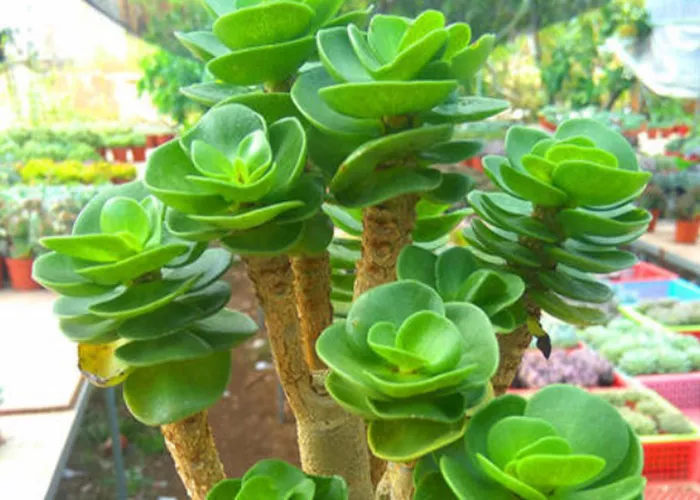The Money Tree Succulent, often referred to colloquially as a “money tree,” is a beloved houseplant known for its braided trunk and lush green foliage. Its popularity stems not only from its aesthetic appeal but also from the symbolic belief that it attracts financial prosperity and good fortune. Native to tropical regions, the Money Tree requires specific care to thrive indoors. This comprehensive guide will cover every aspect of caring for your Money Tree Succulent, from propagation to troubleshooting common issues. By the end, you will be equipped with the knowledge necessary to keep your Money Tree healthy, happy, and perhaps even more prosperous.
Understanding Your Money Tree Succulent
1. Botanical Classification
The Money Tree Succulent, scientifically known as Pachira aquatica, belongs to the Malvaceae family. It’s a fast-growing plant that can reach heights of 6 to 12 feet indoors, though it’s often pruned to maintain a more manageable size.
2. Symbolism and Naming
The name “Money Tree” stems from Chinese folklore, where it’s believed to bring wealth and good luck. The braided trunk symbolizes bringing together different paths to achieve prosperity.
Choosing the Right Money Tree
When selecting a Money Tree, look for one with healthy, green leaves and a sturdy, well-braided trunk. Avoid plants with yellowing or wilting leaves, as these are signs of distress.
Size Considerations
Small Plants: Ideal for desktops or small spaces.
Medium Plants: Perfect for tabletops or small rooms.
Large Plants: Suitable for floors or larger living spaces.
Creating the Ideal Environment
1. Light Requirements
Money Trees thrive in bright, indirect sunlight. Direct sunlight can scorch the leaves, while low light will cause the plant to stretch and lose its compact shape.
Placement: Near a south- or west-facing window with a sheer curtain or a few feet away from an east-facing window.
Artificial Light: Use grow lights if natural light is insufficient.
Temperature and Humidity
Money Trees prefer warm temperatures between 65°F and 75°F (18°C to 24°C). They also appreciate high humidity, which can be maintained by:
Misting: Regularly mist the leaves with distilled or lukewarm water.
Humidifiers: Use a humidifier, especially during dry winter months.
Pebble Tray: Place the pot on a tray filled with pebbles and water, ensuring the pot’s bottom doesn’t sit in the water.
Watering Your Money Tree
1. Watering Frequency
Water your Money Tree when the top 1-2 inches of soil feel dry. This can vary depending on your home’s climate, pot size, and plant size.
In Winter: Reduce watering as the plant grows slower.
In Summer: Water more frequently due to increased evaporation.
2. Water Quality
Use distilled, filtered, or rainwater to avoid chemicals and minerals that can build up in the soil. Tap water can sometimes contain fluoride, chlorine, and heavy metals that are harmful to plants.
3. Watering Technique
Soak and Drain: Water thoroughly until water drains out of the bottom of the pot. Empty the saucer under the pot to prevent root rot.
Avoid Leaf Wetness: Water the soil directly to avoid getting water on the leaves, which can lead to fungal infections.
Fertilizing Your Money Tree
1. Fertilizer Choice
Feed your Money Tree with a balanced, water-soluble fertilizer (20-20-20 NPK) during the growing season (spring and summer). Avoid fertilizing in winter when the plant is dormant.
2. Application Frequency
Monthly Feedings: Apply fertilizer once a month during the growing season.
Dilution: Always dilute the fertilizer to half the recommended strength to avoid burning the roots.
3. Repotting Your Money Tree
When to Repot: Repot your Money Tree every 2-3 years or when it becomes root-bound. Signs of being root-bound include slowed growth, wilting leaves, and roots emerging from the bottom of the pot.
Size: Move up to a pot that’s 1-2 inches larger in diameter.
Material: Opt for pots with drainage holes made of clay, ceramic, or plastic.
4. Repotting Process
Prepare the Pot: Fill the bottom with a layer of pebbles or charcoal for drainage.
Loosen the Roots: Gently loosen the roots with your hands or a small tool.
Transfer the Plant: Place the Money Tree in the new pot and fill around the roots with fresh, well-draining soil.
Water Thoroughly: After repotting, water the plant until water drains out of the bottom holes.
Pruning and Maintenance
1. Pruning for Shape
Pruning is essential to maintain your Money Tree’s shape and health. Remove any yellow, damaged, or dead leaves immediately.
Shape Pruning: Trim branches to encourage bushier growth. Prune in the early spring.
Height Control: Prune the top of the plant to keep it from growing too tall.
2. Cleaning Leaves
Regularly wipe the leaves with a damp cloth to remove dust and pests. This also helps the plant photosynthesize more efficiently.
Conclusion
Caring for your Money Tree Succulent is a rewarding endeavor that not only beautifies your home but also symbolizes prosperity and good fortune. By following the guidelines outlined in this guide—from providing the right light, temperature, and humidity to watering, feeding, and maintaining your plant—you can ensure your Money Tree thrives and brings joy to your living space. Remember, the key to success is consistency and attention to detail. Happy gardening!


